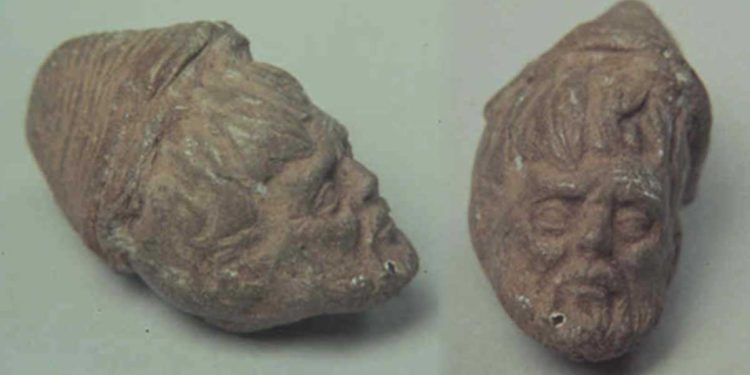In the fascinating world of archaeology, few artifacts have sparked as much debate and intrigue as the Tecaxic-Calixtlahuaca head. Unearthed in Mexico, this terracotta figurine resembles Roman artifacts, leading to speculation about possible pre-Columbian trans-oceanic contact. This article delves into the enigmatic history and theories surrounding this intriguing artifact.
From its discovery in a grave offering to the scientific tests conducted to determine its age, this article examines the evidence and theories that have kept archaeologists and historians guessing for decades. We’ll also consider the work of Romeo H. Hristov, a key figure in this ongoing investigation, and explore the various explanations for the presence of this artifact in the Americas. So, whether you’re an avid history buff or just a curious reader, join us as we journey into the past and explore the fascinating story of the Tecaxic-Calixtlahuaca head.
Facts about the Calixtlahuaca Head
- Origins and Discovery: The Tecaxic-Calixtlahuaca head is a terracotta artifact, thought to have been part of a larger figurine, discovered in 1933 in the Tecaxic-Calixtlahuaca zone of the Toluca Valley, approximately 65 kilometers northwest of Mexico City. This artifact was unearthed among pre-Columbian or post-Columbian grave goods, suggesting its significant age. The head resembles Roman artifacts, leading some researchers, such as archaeologist Romeo H. Hristov, to posit the possibility of pre-Columbian trans-oceanic contact between Rome and the Americas.
- The Excavation: The head was discovered by archaeologist José García Payón during an excavation in 1933. It was part of a grave offering found under three intact floors of a pyramidal structure. The burial site also yielded other objects made of gold, copper, turquoise, rock crystal, jet, bone, shell, and pottery. The burial was dated between 1476 and 1510 AD, but information about the head was not published until 1960.
- The Investigation: The artifact was assessed in 2001 by Romeo H. Hristov of the University of New Mexico and Santiago Genovés T. of the National Autonomous University of Mexico. They suggested that the head could be of Roman origin, dating back to the 2nd-3rd century AD, based on its stylistic resemblance to Roman artifacts from the Severian emperors period (193-235 AD). The researchers found no disturbances in the archaeological context, reinforcing the possibility of the head’s pre-Columbian origin.
- The Age Determination: A thermoluminescence test performed in 1995 established the head’s age range to somewhere between the 9th century BC and the middle of the 13th century AD, confirming its pre-colonial provenance. This age determination supports the theory of pre-Columbian contact between the ancient Mediterranean and Mesoamerican civilizations, a topic of significant interest and skepticism in the archaeological community.
- Theories and Controversies: The Tecaxic-Calixtlahuaca head’s origins and presence in the Americas have sparked numerous research theories and debates. Some propose that it could be a hoax planted by a participating archaeologist. Others suggest an early European visitor might have brought it over, traded or carried it to Asia, and then imported it to America via a transpacific route. Hristov, however, maintains that the possibility of a Roman, Phoenician, or Berber ship—or the drifting of such a shipwreck—reaching the American shores is the most plausible explanation. Nonetheless, the artifact might very well be a testament to ancient global interactions’ enduring mysteries and vast possibilities.
Have something to add? Visit Curiosmos on Facebook. Join the discussion in our mobile Telegram group











